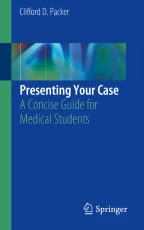
In the oral case presentation, pertinent positives and negatives are presented after the timeline. Pertinent positives, which are disease-specific and can be learned by rote, are used to “rule in” a particular diagnosis. Pertinent negatives, which require more analytical and creative thinking, are gleaned from the differential diagnosis and function to “rule out” other diagnostic possibilities. Taken together, the pertinent positives and negatives help to put the case in focus and make an argument for the most likely diagnosis. Four example cases are given to illustrate the crucial role of pertinent positives and negatives in the case presentation. Active listening on rounds, involvement in case discussions, and ongoing experience with patient assessment will help medical students to both memorize the pertinent positives and develop the differential diagnosis skills needed to identify the pertinent negatives. Finally, careful consideration of pertinent positives and negatives can help students to recognize the underlying patterns and diagnostic possibilities in patients with atypical or ambiguous presentations.
This is a preview of subscription content, log in via an institution to check access.
Access this chapter
Subscribe and save
Springer+ Basic
€32.70 /Month
- Get 10 units per month
- Download Article/Chapter or eBook
- 1 Unit = 1 Article or 1 Chapter
- Cancel anytime
Buy Now
Price includes VAT (France)
eBook EUR 64.19 Price includes VAT (France)
Softcover Book EUR 79.11 Price includes VAT (France)
Tax calculation will be finalised at checkout
Purchases are for personal use only
References
- Tavora F, Burke A. Review of isolated ascending aortitis: differential diagnosis, including syphilitic, Takayasu’s and giant cell aortitis. Pathology. 2006;38(4):302–8. ArticlePubMedGoogle Scholar
- Huffman JL, Schenker S. Acute acalculous cholecystitis: a review. Clin Gastroenterol Hepatol. 2010;8(1):15–22. ArticlePubMedGoogle Scholar
- Headache Classification Committee of the International Headache Society (IHS). The international classification of headache disorders, 3rd edition. Cephalalgia. 2018;38(1):1–211. ArticleGoogle Scholar
- Kristofferson ES, Lundqvist C. Medication-overuse headache: epidemiology, diagnosis and treatment. Ther Adv Drug Saf. 2014;5(2):87–99. ArticleGoogle Scholar
- Schattner A. Teaching clinical medicine: the key principals. QJM. 2015;108(6):435–42. ArticleCASPubMedGoogle Scholar
- Conan Doyle A, Blaze S. The complete Sherlock Holmes. New York: Doubleday; 1930. p. 335–50. Google Scholar
- Carbone I, Sedati P, Galea N, Algeri E, Passariello R. Right-sided aortic arch with Kommerell’s diverticulum: 64-DCTA with 3D reconstructions. Thorax. 2008;63(7):662. ArticleCASPubMedGoogle Scholar
- Knepper J, Criado E. Surgical treatment of Kommerell’s diverticulum and other saccular arch aneurysms. J Vasc Surg. 2013;57(4):951–4. ArticlePubMedGoogle Scholar
Author information
Authors and Affiliations
- Professor of Medicine, Department of Medicine, Case Western Reserve University School of Medicine, Louis Stokes Cleveland VA Medical Center, Cleveland, OH, USA Clifford D. Packer MD
- Clifford D. Packer MD

